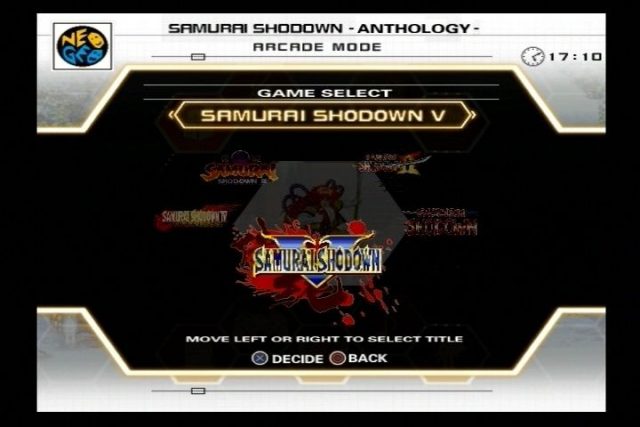

He also hopes that his revolt will make the next shogun in line, Yoshitora Tokugawa, realize his responsibilities to his country. Upset by his country men’s lamentations and the shogun’s indifference to their plight, former Tokugawa general, Kyogoku Hinowanokami Gaoh, stages a rebellion in his land, Hinowa, against the reigning Tokugawa.
Samurai shodown anthology japanese lang series#
The series begins during the Tenmei famine in Japan, which lead to a severe depression and near chaos throughout the country. 1811 – Samurai Shodown: Warriors Rage ( PlayStation).1790 (late autumn through winter) – Samurai Shodown 64: Warriors Rage.1789 (autumn) through 1790 (summer) – Samurai Shodown 64.1789 (spring through summer) – Samurai Shodown II.1788 (autumn through early winter) – Samurai Shodown IV.1788 (summer through early autumn) – Samurai Shodown III.1788 (early spring through early summer) – Samurai Shodown.1786 (January through late summer) – Samurai Shodown V ( Special).Here is the official timeline taken from the official Samurai Shodown V website : Earlier games also have a referee in the background, officiating the match.

The Samurai Shodown games are most famous for their “Rage” (怒) gauge, a meter that only increases as a player receives damage, and which when fully activated has numerous effects depending on game. While he continues to design for a few of the later games, they are illustrated by another artist named Senri Kita until the fifth title. His illustrations featured a distinctive, traditional Japanese calligraphy style. For the early games (Part 1 to 4), the characters are created and illustrated by Eiji Shiroi. There are two main artists responsible for the character designs and illustrations.

Several characters are loosely based on real people from Japanese history. Much of the music includes traditional Japanese instruments (predominately the shakuhachi, shamisen, koto and taiko) and later enka. Win quotes and other cut scenes provide subtitles in several languages, including but not limited to English, Portuguese, and German. For instance, unlike most fighting games made in Japan, the characters in the series (including the announcer) generally speak only in Japanese, with dialects ranging from archaic formalities and theatricalism to modern-day slang, something that has been preserved for overseas releases. Samurai Shodown consequently portrays snippets of the Japanese culture and language internationally with little edits. The plot of each game is quite different, but they circle a central group of characters and a region in Japan.
Samurai shodown anthology japanese lang license#
The stories in the series take place in 18th-century Japan, during the Sakoku or seclusion period of Japan, (the first four games run across 17) with great artistic license so that foreign-born characters (including some from places that didn’t exist as such in 1788) and fictional monsters can also be part of the story.


 0 kommentar(er)
0 kommentar(er)
